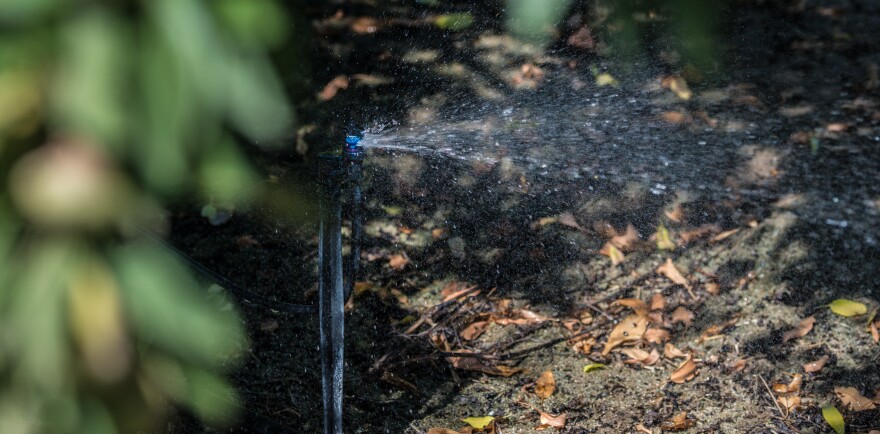Almonds have been grown almost exclusively in California's Central Valley and rake in billions of dollars for the state's economy. But with rising temperatures thanks to climate change, increasing drought, and a scarcity of water in California, researchers are seeing if Idaho might become a suitable place to grow almonds.
California: The Home of Almonds
Virtually all almonds in the U.S. are produced in a 20,000 square mile area in the middle of California. The hot and dry Mediterranean climate there helps produce $17 billion worth of crops every year.
“Almonds are just ideally situated to grow in the Central Valley, California, better, really, than any place else in the world,” said Richard Waycott, the CEO of California’s Almond Board.

Temperatures rarely dip below freezing and historic rain levels have created rich soil, providing an environment suitable for almond growth.
But as the climate warms, the trees will need more water. Drought conditions in the state could threaten the expansion of almond production.
“One of the challenges that not just almonds, but really any ag[riculture] in California is seeing now and I think will see into the future is really at that nexus of heat and water,” said Lauren Parker, a post-doctoral fellow and coordinator at the U.S. Department of Agriculture (USDA) California Climate Hub.
California is trying to fix the problem by limiting groundwater use, but the heat and dry conditions are relentless.

“It’s hitting the growers up and down the state pretty hard,” Waycott said.
Still, California’s almond industry continues to expand. Despite the pandemic’s impact on international trade in 2020, California produced more than 3 billion pounds of almonds for the first time, an unprecedented increase of 37% over just two years earlier.
Waycott said farmers are trying to find ways to use less water. Some have removed older almond trees and replaced them with younger trees, which use water more efficiently.

But even with these adjustments, Waycott said it’s not enough.
“There’s no doubt that we will be shrinking the footprint in the Central Valley,” he said. “The question is what crops prevail and which don’t, or which ones move to Arizona, or Idaho, or overseas to Mexico.”
Some farmers have tried to grow almonds in western Arizona, close to the Nevada and California border.
“There are a couple of orchards also in the Kingman, Arizona area and then one other area in Arizona,” he said. “[They are] very small and sort of experimental to see if they can make a go of it. Doesn’t look very promising.”
Summer monsoons and spring frosts made it difficult for them to grow. Other tree nuts, such as pecans and pistachios, need different conditions and are starting to flourish in Arizona.Could Almonds Have A New Home In Idaho?
Some researchers are starting to look north and ask: Could the Potato State become a hub for almonds?
University of Idaho researchers are finding commercial production could thrive here.
“For some things like almonds, the near current and near future climate changes are making it such that it’s more viable to grow those crops in Idaho,” said Alejandro Flores, an associate professor in the Department of Geology at Boise State University. He is not a part of the UI research team, which did not respond to interview requests.
Flores said almond crops here have failed previously because of freezing temperatures.
“Historically, you might have been able to establish an almond tree,” he said. “But it’s likely that over some period of time, you’d have seen a frost event that would have completely wiped out your orchard.”
Parker, now at the USDA, wrote her dissertation on how climate change could push almond production north to states like Idaho. She said this frost barrier may not be around in the future.
“Let’s say 15, 20 years from now, our model projections suggest that spring frost risks will be reduced and quite significantly in warmer parts of the state, more mild areas like Parma, for example,” she said.

Parma, in Canyon County, has an average winter temperature of nearly 40 degrees, meaning it doesn’t see as many sub-freezing days as other parts of Idaho.
The almond trees the UI researchers have been growing in Parma for the past seven years have survived three major frosts. Fourteen different varieties are growing there to see which performs best.
This study’s success has caught the attention of some farmers in Idaho. Patrick Williamson is the co-owner and manager of Williamson Orchards and Vineyards. He said that he’s watching the research and may add almond trees to his Caldwell farm in the future.
“I think there is a potential for an almond or nut industry in Idaho,” he said.
The Idaho Farm Bureau Federation commented on the UI study, saying Idaho could be a good place for almond production because of its greater water supply, fewer regulations, and lower land prices.
But Idaho is also facing increasing droughts, which could worsen in the future.

“The water issue in Idaho could be in the same scenario,” Williamson said. “We’ve got to be very careful with that precious resource.”
Almond trees take about five to 12 years to mature before they can produce a crop, so even if farmers planted trees now, it could be a decade before they were ready to harvest. Climate and water levels could be a lot different by then.
“There’s a lot of variables that make it kind of hard to see if it could be successful,” Williamson said. “I think so, if you got all your ducks in a row, it should be very viable.”
But in the meantime, the almond industry continues to grow, with increasing demand for products such as almond milk. Unlike a lot of other crops, almonds don’t need refrigeration and have a shelf life of more than two years.
ResearchAndMarkets.com projects the industry could reach a value of more than $12 billion by 2025.


